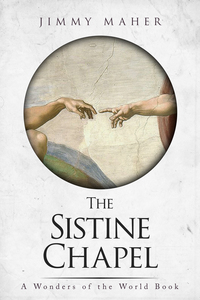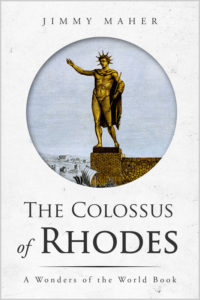To hear Gregory Yob tell it, Hunt the Wumpus was as much inspired by his hatred of the Cartesian grid employed by Hurkle and similar games as it was by anything else. Yob wanted to make a monster-seeking game based on the dodecahedron, his “favorite Platonic solid.” I must say my own interest in geometry is limited enough that it’s hard for me to share Yob’s passion; certainly I lack a “favorite Platonic solid” to compare with Yob’s. I’m more interested in the other innovations Yob deployed on the way to implementing his dodecahedron.
Hunt the Wumpus is the origin point of all those twisty little passages that would be filling so many computer screens and graph-paper pads just a few years after its creation. Its world consists of a grid of twenty rooms, each of which is connected to exactly three other rooms. Some of these rooms have contents, which are randomly placed before each play: bottomless pits that result in instant death, “super bats” that carry the player to another (random) room, and of course the wumpus himself. If the player walks in on him, he has a 75% chance of merely wandering off to another room, but a 25% chance of eating her up right there. The wumpus can be killed only remotely, by firing an arrow from elsewhere into the room that contains him. The game in fact understands just two verbs: “move” and “shoot.” Gameplay, at least if you’re a cautious (not to say callow) sort like me, consists of moving carefully around the storyworld constructing a map of its rooms, connections, and hazards, and finally moving into position to take the kill shot against the poor wumpus. On the terminal, it looks like this:
HUNT THE WUMPUS
YOU ARE IN ROOM 20
TUNNELS LEAD TO 13 16 19
SHOOT OR MOVE (S-M)?M
WHERE TO?13
I FEEL A DRAFT
YOU ARE IN ROOM 13
TUNNELS LEAD TO 12 14 20
SHOOT OR MOVE (S-M)?M
WHERE TO?20
YOU ARE IN ROOM 20
TUNNELS LEAD TO 13 16 19
SHOOT OR MOVE (S-M)?
Okay, so it’s not too much to look at. When you play it for the first time, you might end up asking if that’s really all there is. Still, if you give it a decent chance you’ll find a well-constructed little game that can still be engaging, at least for the first few plays as you sort out how it works and how to beat it. From a design perspective, its biggest flaw is perhaps that you can often begin with a configuration like this:
I FEEL A DRAFT
YOU ARE IN ROOM 4
TUNNELS LEAD TO 3 5 14
The draft tells you that you are adjacent to a pit; one of those three tunnels, in other words, leads to death. Because you have not yet had a chance to gather any additional information, you are left to rely on blind chance. You must just pick one and hope for the best — hardly a fair situation.
But I’m not so interested in “pure” game design as I am in the history of ludic narrative. From that perspective, Hunt the Wumpus is hugely important in two ways.
First, it represents a radical change in perspective from games like Hurkle. While the player viewed those games from on-high, Wumpus places her in its storyworld. You are there, creeping from room to room in the darkness. Wumpus offers the merest stub of a narrative, but that stub combined with the switch from a third-person to a first-person perspective gives it a very different feel from Hurkle and its companions. Those games feel like abstractions; Wumpus is a much more immersive experience. It wasn’t quite the first game to put its player inside a storyworld — The Oregon Trail, at least, preceded Wumpus by about a year and was possessed of a much more full-bodied narrative in addition — but it’s nevertheless a significant departure from the norm of its time.
Second, and even more importantly, Wumpus is a prototype version of the system of geography that is still with IF today: a set of discrete, self-contained rooms linked together by connectors the player can use to pass from one to another. Compass directions are not yet here, but the rest of the scheme is. Wumpus is all about mapping. The early IF games that would follow were continuing its tradition in being full of those twisty little passages that so frustrate modern players who try to go back to them today. This brings up a point that I’ve only recently started to grasp: the earliest IF was about geography and mapping more so than story or even puzzles. (I want to talk about the original Adventure just a bit after I finish up with Wumpus. I’ll have more to say about this idea then.)
Like The Oregon Trail, all signs point to Hunt the Wumpus having been originally written in HP Time-Shared BASIC. I was able to locate it on tapes preserved by Bob Brown and Michael Gemeny of the HP-2000 Yahoo! Group. Its BASIC code was first published in a mid-1973 issue of the People’s Computer Company magazine, and later appeared in the October, 1975, issue of Creative Computing. The program that appeared there is almost identical to that which we found on the tape, with the only notable difference being some REM and PRINT statements found in the printed version that attribute it to Yob and plug Wumpus 2 and Wumpus 3, two sequels he had written by that time.
Unlike The Oregon Trail, which remained quite firmly under the thumb of MECC and was apparently spread only to educational institutions, Wumpus quickly spawned heaps of ports and adaptations on almost every viable computing platform of its era (and of every era since). By the time it appeared in Creative Computing Yob could write that, “I have reports of Wumpus written in RPG, a listing of one in FORTRAN, a rumor of a system command of ‘to Wumpus‘ on a large corporation’s R&D computer system and have even seen an illustrated version for the Hazeltine CRT terminal!!” It was interesting enough as a game to cross the cultural boundaries that normally kept the cheerful BASIC hippies of PCC and Creative Computing separated from the world of the hardcore institutional hacker. At least by the 1975 release of Unix Version 6 (and quite possibly earlier), Wumpus had been ported to Unix C; a comment in the source cheerfully declares it “stolen from PCC Vol. 2 No. 1.”
Thanks to Bob Brown, you can experience the original version of this relic in its original environment if you’d like, as well as its immediate predecessors Hurkle, Snark, and Mugwump. Here’s what you need to do. (Yes, this is largely the same drill used to access The Oregon Trail on the same system.)
1. Telnet to mickey.publicvm.com. (Telnet, mind you. None of that newfangled SSH!)
2. Slowly alternate CTL-J and CTL-M until you see a “PLEASE LOG IN” message.
3. Enter “HEL-T001,HP2000,1″. Without the quotes, of course — and note that those are zeroes. Oh, and the system isn’t case-sensitive, but for the authentic experience you might want to have your caps lock on.
4. Enter “GET-WUMPUS” for Hunt the Wumpus; “GET-HURKLE” for HURKLE; “GET-SNARK” for Snark; or “GET-MUGWMP” for Mugwump.
5. “LIST” the program if you like, or just “RUN” it.
Have fun!









